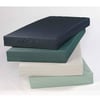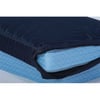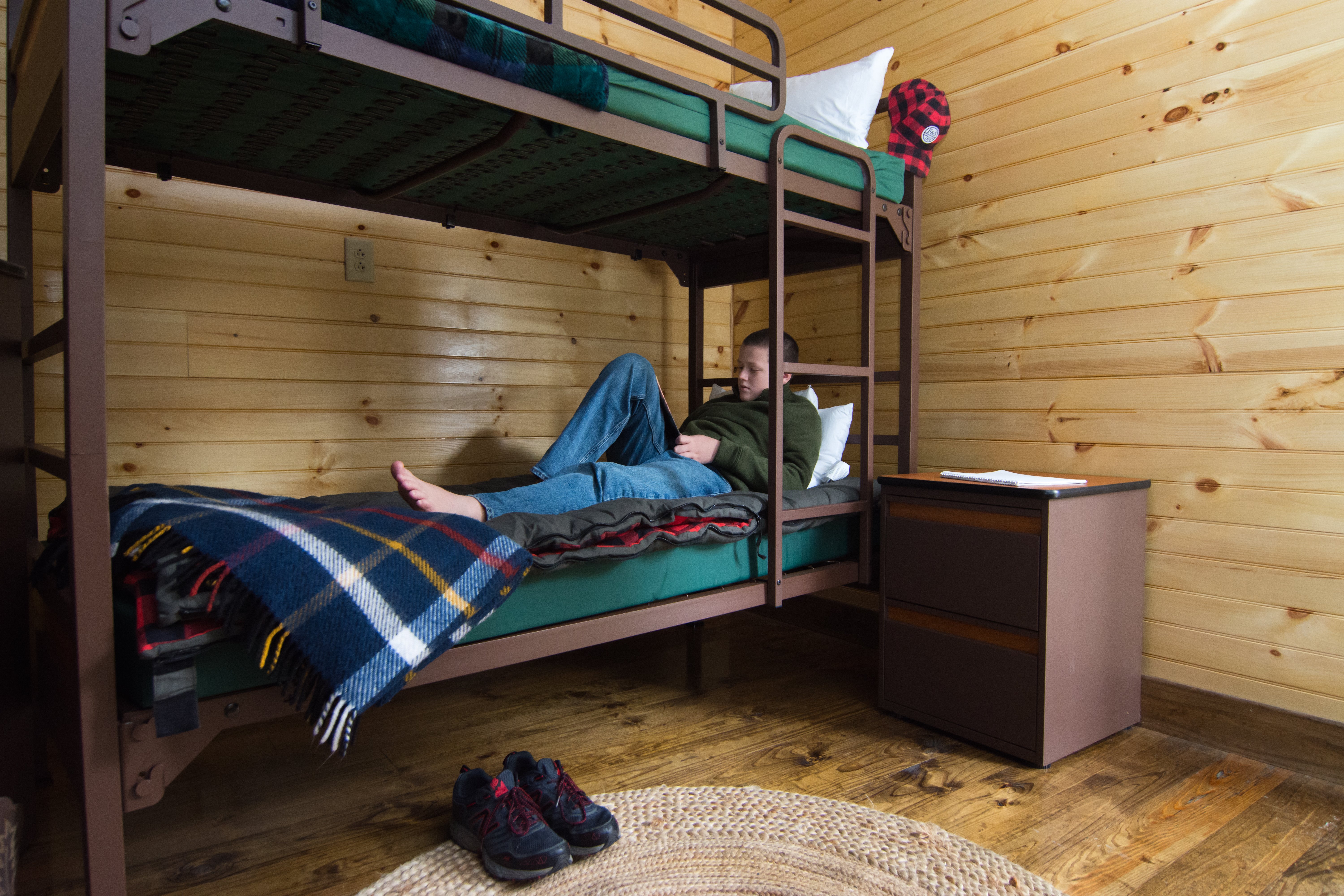
There’s nothing worse than bed bugs, those creepy crawly enemies of facilities, dorms, camps, and missions. But how do you know when you’re at risk, or more importantly, how to prevent an infestation? Don’t worry — that’s what we’re here for! Here’s how to discover, deal with, and prevent a bed bug infestation in your facility.
What are bed bugs?

Bed bugs are small, wingless insects that feed on warm-blooded animals. They are a flattened oval shape, ranging in size from 1/4” to 3/8” long and are mahogany or red-brown in color. They live in dark spaces close to their food source and are most active at night. Bed bugs commonly reside in mattress seams and bed frames, in the edges of carpeting, behind baseboards, window, and door casings, in curtains, picture frames, loosened wallpaper, and cracks and crevices in the walls and furnishings.
Bed bugs seek out these places because of the easy access to a human food source. They can enter a structure by attaching to clothing and bedding and by hiding in luggage. Sometimes birds or other small animals bring them indoors.
Once bed bugs have entered an inhabited structure, they feed and proliferate, laying their eggs in the small, dark crevices in which they spend the daylight hours, and ultimately infesting the entire structure.
How do I know if I have bed bugs?
Although the problem of bed bugs has been around for centuries, there has been a recent insurgence of bed bug infestations in North America, South America, Europe, and Australia.
While bed bugs infest a relatively small percentage of residences, these insects can stow away in luggage, used furniture, clothing, pillows, boxes, and other objects. Due to the constant coming and going of clients at summer camps, retreat centers, rescue missions, homeless shelters, and transitional housing organizations, these places are particularly vulnerable to an infestation of bed bugs. One person to bring in enough bed bugs to infest an entire structure.
 Some signs of bed bugs include:
Some signs of bed bugs include:
- Clients complaining of bites that occurred while sleeping
- Evidence of molted bed bug shells
- Small, white eggs found in the tape-edging of the mattress, box spring, the edge of the carpet, corners of the furniture, etc.
- Small reddish-brown blood stains or fecal material on the bed linens
Why are bed bugs so difficult to get rid of?
Once a structure is infested with bed bugs, they are very difficult to completely eradicate. Unlike most animals, bed bugs only need one blood meal per year in order to survive; therefore, even seasonal organizations are at risk for permanent bed bug infestation.
Additionally, bed bugs are generally nocturnal insects, doing most of their feeding and moving at night. They are also adept at hiding in small, hard-to-reach places during the cleaning/eradication process.
Furthermore, bed bugs can move between rooms through voids in the walls, holes through which wires and pipes pass, and even on the clothing of people. If even one bed bug or bed bug egg is left during the eradication process, the potential for re-infestation remains very high.
What can I do to prevent bed bugs?
Organizations should be aware of the threat of bed bug infestation and learn to limit the potential for this devastating problem. There are a number of factors that increase an organization’s risk of becoming infested with bed bugs. These include:
- Used furniture and mattresses
- Quilted mattresses
- Wooden furniture
- Inadequate storage space
Used furniture and mattresses are huge risk factors for bed bug infestation. Bed bugs can hide in the seams of mattresses, and in the corners of bed frames and drawers and can pose a serious risk for bed bug infestation throughout the organization.
If an organization chooses to accept used furniture, it should:
- Carefully scrutinize the furniture for any evidence of bed bugs
- Consider the history of the items in question to determine their potential to carry bed bugs
Residential quilted mattresses are risk factors for bed bug infestation for two reasons. Not only do these mattresses lack the benefits of antibacterial, waterproofing capabilities that a mattress covered in AntiBac Vinyl or SoFlux OX fabric has, but they also serve as a hiding and breeding area for bed bugs. Bed bugs hide in the seams of the quilting, as well as in the tape-edged seam, making it nearly impossible to uproot them once they have taken up residence.
American Bedding Manufacturers has pioneered a new line of products in recent years that have been independently certified to be BED BUG PROOF. Our Bed Bug Proof mattresses and covers have an inverted seam and a bed bug proof enclosure, giving the bed bugs no edges in which to hide or lay their eggs.
Additionally, our Bed Bug Proof products are made with AntiBac Vinyl or SoFlux OX Nylon fabrics which, unlike a quilted mattress, provide a smooth, impenetrable surface that will prevent bed bugs from burrowing in. In addition, these fabrics are antibacterial and easy to clean.
Another investment that can save organizations from bed bug infestation is metal bunk beds and furniture. Wooden furniture retains moisture, creating a natural environment in which bed bugs can burrow and hide during the day, whereas metal furniture is cold and dense, decreasing the availability of hiding places for bed bugs. American Bedding’s Model 4500 Metal Bunk Bed provides a minimalist-style bunk option and comes in a wide variety of sizes to meet every need. Its powder-coated steel frame and sleek curvaceous design limit the places where bed bugs could potentially hide and proliferate.Lastly, investing in adequate metal storage containers in which clients can stow their belongings can limit the spread of bed bugs. When clients lack adequate storage space, their belongings often lie around on the floor, the mattresses, and on one another’s luggage, creating an environment in which bed bugs can easily move and spread from person to person, ultimately infesting everyone and everything. Our Platinum Furniture Collection provides an aesthetic line of metal furnishings that allow clients’ personal belongings to be stored properly: which in turn limits the possibility that the organization, or the clients and their homes, will become infested with bed bugs.
How can I get rid of bed bugs?
Heat treatment has proven to be the most effective cure for a bed bug infestation. If administered properly, one heat treatment can eradicate the entire population of bed bugs.
Once these pesky insects are gone, reduce your risk of dealing with them again by purchasing Bed Bug Proof Mattresses from American Bedding Manufacturers and then protecting them with Bed Bug Proof Mattress Covers. Our Bed Bug Proof Bedding is available in nylon and vinyl. Check out these options:
Camp Mattresses |
|
Dormitory Mattresses |
Vinyl Bed Bug Proof Mattress Covers |
Nylon Bed Bug Proof Mattress Covers
When it comes to protecting your facility, camp, shelter, or college campus, you already have a lot on your plate. Don’t let bed bugs become a pain in your neck, and side, and bedsheets. Learn to recognize signs of bed bug infestation by checking bedclothes for molten shells and eggs and recognizing bites on your guests. Wash guest clothing and bedding within 24 hours of entering the facility and keep all furniture, walls, and floors clean to prevent infestation. And, most importantly, stock up on our Bed Bug Proof mattresses and mattress covers for your facility!
If you're wondering which type will work best at your facility, contact us at (800) 203-2507!
Editor's Note: This blog was originally published on 3/10/17 & has been updated with more recent information.









.png.png)
.png)
.png)